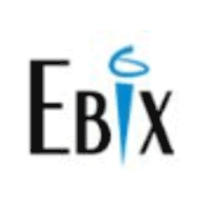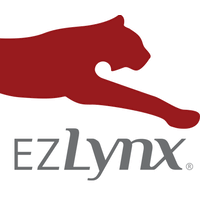Top Insurance Softwares
Insurance software streamlines processes within the insurance industry, enhancing efficiency and accuracy. It provides tools for policy management, claims processing, underwriting, and customer relations. These solutions automate routine tasks, reduce errors, and ensure compliance with industry regulations. By integrating data analytics, insurance software helps in risk assessment and decision-mak... Read More
133 companies found
Product Description
Ebix is a software company that provides cloud-based solutions specifically tailored for the insurance, finance, and healthcare sectors. Focusing on streamlining and optimizing operations, Ebix offers a suite of products that can help businesses simplify their workflows, enhance customer service, and manage risk more effectively. One of the standout features of Ebix software is its ability to int... Read More
Users
- • No Data
Industries
- • No Data
Market Segment
- • No Data
Product Description
At Majesco, we help insurers modernize their technology systems and adapt to changing business needs. Our software solutions are designed specifically for the insurance industry. We offer tools that streamline operations, improve customer engagement, and support new business models. Our cloud-based platform allows insurance companies to manage everything from policy administration and billing to ... Read More
Users
- • No Data
Industries
- • No Data
Market Segment
- • No Data
Product Description
Eclipse Software is designed to support businesses in efficiently managing their various operations from a single platform. It provides a comprehensive set of tools that cater to different aspects of business management, such as project organization, team collaboration, data analysis, and customer relationship management. With Eclipse, your team can easily collaborate on projects no matter where ... Read More
Users
- • No Data
Industries
- • No Data
Market Segment
- • No Data
Product Description
EZLynx is a cloud-based software designed to simplify and streamline operations for insurance agents and agencies. At its core, it provides a comprehensive suite of tools to manage everything from quoting and policy management to customer relationship management (CRM) and business intelligence. With EZLynx, users can handle multiple aspects of their business in one place, which helps save time and... Read More
Users
- • No Data
Industries
- • No Data
Market Segment
- • No Data
RateFactory
Product Description
RateFactory is a straightforward and efficient tool for businesses looking to streamline their pricing strategies. Designed with ease-of-use in mind, RateFactory helps you quickly and accurately create and manage rate plans. With RateFactory, there's no need to spend hours tinkering with complicated spreadsheets or dealing with messy manual calculations. This software allows you to generate compr... Read More
Users
- • No Data
Industries
- • No Data
Market Segment
- • No Data
Product Description
BriteCore offers a straightforward and efficient way for insurance companies to manage their business. With this software, companies can handle all aspects of their operations through a single platform, making tasks simpler and more efficient. One of the main benefits of BriteCore is its focus on streamlining processes. The software allows for the automation of various administrative tasks, such ... Read More
Users
- • No Data
Industries
- • No Data
Market Segment
- • No Data
Product Description
INSTEANDA is a software platform designed for insurance companies to create and manage their products quickly and efficiently. It empowers insurance providers to bring their ideas to life without needing extensive coding skills. Essentially, INSTEANDA helps you design, test, and launch new insurance products with ease. Everything is set up to be user-friendly, allowing you to adapt and customize... Read More
Users
- • No Data
Industries
- • No Data
Market Segment
- • No Data
AgencyBloc
Product Description
AgencyBloc is a software platform designed specifically for insurance agencies, aiming to make their daily operations smoother and more efficient. At its core, AgencyBloc combines customer relationship management (CRM) with commission tracking and policy management tools. This ensures that insurance professionals can handle their clients and business processes all in one place without juggling mul... Read More
Users
- • No Data
Industries
- • No Data
Market Segment
- • No Data
Product Description
Qover is a provider of embedded insurance solutions that cater specifically to businesses looking to seamlessly integrate insurance options into their offerings. Imagine you run an online platform or service and want to provide added value to your customers by ensuring they get the protection they need, right at the point of sale. Qover makes this possible with ease. Their flexible API-driven tech... Read More
Users
- • No Data
Industries
- • No Data
Market Segment
- • No Data
Product Description
Veruna is a practical software solution designed specifically for insurance agencies looking to streamline their operations and enhance customer service. Built on the Salesforce platform, Veruna offers versatility and ease of use, allowing agencies to manage their entire insurance business from one central system. With this software, users can handle everything from customer relationship managem... Read More
Users
- • No Data
Industries
- • No Data
Market Segment
- • No Data
What features should I look for in Insurance software?
When exploring the world of Insurance software, it's crucial to understand the essential features that support efficient operations and cater to client needs. Here is a list of important features to consider:
Policy Management
Insurance software should streamline the creation, updating, and management of insurance policies. This feature ensures that all client data and policy information are centralized, up-to-date, and easily accessible.
Claims Processing
Streamlined claims processing is vital. Look for software with automated workflows, which helps in managing and processing claims quickly and accurately. This can enhance customer satisfaction through faster service.
Reporting and Analytics
Effective reporting and analytics features provide insights into business performance. Insurance software should offer customizable reports and advanced analytics to track trends, performance, and compliance.
Customer Relationship Management (CRM)
A built-in CRM system is crucial for managing client interactions and maintaining detailed client records. This feature enhances customer service by ensuring personalized and efficient communication.
Underwriting Management
Robust underwriting management tools are essential in Insurance software. They evaluate risk and determine policy terms and pricing. Automation in underwriting can improve accuracy and turnaround time.
Integration Capabilities
Insurance software should seamlessly integrate with existing systems, whether they're accounting tools or customer service platforms. This ensures smooth operational flow and data consistency across platforms.
Document Management
Handling large volumes of documents is a common requirement. Insurance software should offer secure document management, enabling easy storage, retrieval, and sharing of critical documents.
Risk Management Tools
To support informed decision-making, insurance software should include risk management tools. These help insurers identify, analyze, and mitigate potential risks asociated with underwriting and claims.
Compliance Management
Insurance regulations can be complex. Your software should help ensure compliance with industry standards and regulations by providing automatic updates and alerts related to compliance changes.
Billing and Invoicing
Automated billing and invoicing features streamline financial transactions. Insurance software should facilitate correct policy billing and offer convenient payment options for clients.
Multi-Channel Access
Insurance software should provide multi-channel access, including mobile and web platforms. This allows staff and clients to access necessary tools and information anytime, anywhere.
Customization and Scalability
Customization is key to fulfilling specific business needs. Insurance software should allow for custom workflows and features while supporting scalability to accommodate business growth.
Security Features
Given the sensitive nature of data handled, robust security features are paramount. Look for software with data encryption, user authentication, and regular security updates to protect client information.
Customer Portal
A self-service customer portal enhances client engagement and reduces service costs. It allows clients to access their policies, submit claims, and track claim status independently.
In conclusion, these are some of the primary features to consider when selecting Insurance software. Each of these elements contributes to more efficient processes, improved client service, and streamlined business operations, serving both insurers and clients effectively.
How does Insurance software improve claim processing?
Streamlined Workflow Management
Insurance software enhances claim processing by establishing streamlined workflows that efficiently manage and track claims. Automated processes minimize manual tasks, allowing claims to be processed faster with fewer errors. By standardizing tasks, the system ensures that each step of the claim handling process is adhered to systematically, improving overall efficiency.
Automated Data Entry
The automation capabilities of Insurance software significantly reduce the need for manual data entry. It integrates with various data sources, extracting and entering necessary information automatically. This reduces human error, decreases processing time, and ensures that claims are processed with greater accuracy and consistency.
Enhanced Decision-Making with Data Analytics
Insurance software leverages data analytics to aid in decision-making during claim processing. By analyzing historical data and current trends, the software can identify patterns and predict outcomes, enabling more informed decisions. This enhances the accuracy of claims approval or denial, reducing the risk of fraudulent claims and ensuring customers receive fair assessments.
Improved Communication and Collaboration
By providing a centralized platform, Insurance software improves communication and collaboration among stakeholders involved in the claims process. It allows for real-time updates and information sharing, ensuring that all parties, from adjusters to policyholders, are informed throughout the claim lifecycle. This transparency improves customer satisfaction and trust.
Efficient Document Management
Insurance software provides advanced document management capabilities that simplify handling and storing claim-related documents. With features such as scanning, indexing, and electronic storage, the software ensures easy retrieval and management of documents. This efficiency in document handling contributes to quicker claim processing and enhanced record-keeping.
Integration with Other Systems
Through integration with other systems such as Customer Relationship Management (CRM) and Enterprise Resource Planning (ERP), Insurance software offers enriched functionalities needed for claim processing. This seamless integration ensures all necessary information is available, providing a cohesive environment that supports rapid and accurate claims management.
Real-Time Monitoring and Reporting
Real-time monitoring and reporting are crucial features of Insurance software in claim processing. The software offers dashboards and reporting tools that provide insights into the status and performance of claims. This feature ensures that bottlenecks or issues are identified and addressed promptly, helping to maintain an efficient claims process.
Compliance and Risk Management
Insurance software aids in compliance and risk management by ensuring that all claims processing activities adhere to regulatory standards. It alerts users about compliance issues and provides audit trails, reducing the risk of non-compliance penalties. This aspect of the software helps in managing risks effectively while processing claims.
Customer Experience Enhancement
Enhancements in claim processing facilitated by Insurance software directly impact customer experience. By ensuring quick response times, accurate processing, and transparent communication, the software contributes to higher customer satisfaction. Policyholders appreciate efficient handling of claims, reinforcing trust in the insurance provider.
Insurance software thus plays a crucial role in refining the claim processing mechanism. Through automation, enhanced analytics, streamlined workflows, and improved communication, it ensures that claims are processed quickly, accurately, and with a high degree of customer satisfaction.
What benefits do insurers get from using Insurance software?
Streamlined Operations
Insurance software simplifies various operational tasks by automating data entry, claims processing, policy management, and other routine activities. Insurers save time and reduce errors through these automated processes, leading to enhanced operational efficiency. Automation allows employees to focus on more complex tasks that require human judgment, improving productivity and resource allocation.
Enhanced Customer Service
With Insurance software, customer interactions become more streamlined and personalized, leading to improved customer satisfaction. The software offers comprehensive customer profiles, enabling more personalized communication and responses. Quick access to customer data allows for prompt service, policy updates, and swift resolution of customer inquiries or claims, fostering stronger customer relationships.
Data Management and Analysis
Insurance software facilitates better data management by consolidating vast amounts of data into a single platform. It enables insurers to analyze trends, customer behavior, and risks effectively. Advanced analytics tools within the software help in predicting market trends, assessing risk, and making informed decisions. Efficient data management results in better underwriting practices and strategic planning.
Regulatory Compliance
Compliance with regulatory standards is crucial in the insurance industry. Insurance software offers tools to help insurers maintain up-to-date compliance with government regulations and industry standards. Automated compliance checks and reporting features ensure that policies and procedures are consistently aligned with current laws, reducing the risk of fines and legal issues.
Risk Management
The ability to assess and manage risk effectively is a significant advantage of Insurance software. Through advanced algorithms and predictive analytics, insurers can better evaluate potential risks and derive insights to mitigate them. This capability leads to more accurate pricing, underwriting, and policy offerings, enhancing the company's profitability and stability.
Cost Efficiency
Implementing Insurance software results in considerable cost savings for insurers. By reducing manual tasks, streamlining workflows, and minimizing errors, the software decreases operational costs. It also enables better resource management, allowing companies to direct their investments into areas that promise growth and innovation.
Improved Decision-Making
Insurance software provides valuable insights through real-time data analysis and reporting capabilities. These insights support strategic decision-making in areas such as product development, market expansion, and customer targeting. Access to accurate, up-to-date information empowers insurers to react swiftly to market changes and continuously refine their strategies.
Scalability and Flexibility
Insurance software offers scalability and flexibility to insurers looking to grow and expand. Modular structures enable companies to add functionalities or modify existing ones as needed, without significant investments or disruptions. This adaptability makes it easier for insurers to respond to evolving market demands and technological advancements.
Collaboration and Communication
Effective collaboration and communication are critical for success in the insurance industry. Insurance software fosters collaboration among different departments by providing a centralized platform for information sharing and communication. Enhanced collaboration leads to improved workflow coordination, boosting overall company performance.
Insurance software enhances operations by automating tasks and enriching data analysis while ensuring compliance and reducing risk. It contributes to improved customer service, cost efficiency, scalability, and internal collaboration, benefiting insurers substantially.
How does Insurance Software Help in Managing Customer Data?
Streamlined Data Collection
Insurance software plays a crucial role in streamlining the process of collecting and storing customer data. Traditionally, gathering customer information was labor-intensive, involving physical paperwork and manual data entry. With Insurance software, this process becomes automated and digital, ensuring accurate data capture. This reduces human error, as the software extracts and processes data directly from digital forms or customer inputs. By efficiently gathering data from multiple sources, Insurance software provides a comprehensive and precise customer profile.
Centralized Database Management
Another powerful aspect of Insurance software is the centralization of data storage. Having a single, unified database means all customer data—personal information, policy details, claim history, and contact information—are accessible from one platform. This eliminates data silos and ensures that information is up-to-date and consistent across the organization. Centralized data management facilitates seamless access for all authorized team members, enhancing collaboration and improving customer service response times.
Enhanced Data Security
Security is paramount when managing sensitive customer data. Insurance software provides robust security measures to safeguard information. It includes features such as encryption, user authentication, and access controls, which protect data from unauthorized access and breaches. By employing these security protocols, Insurance software ensures compliance with relevant data protection regulations, thereby maintaining customer trust and avoiding legal repercussions.
Efficient Data Retrieval and Analysis
Insurance software allows for quick and efficient data retrieval, simplifying the process of accessing specific customer information when needed. With advanced search functionalities and filtering options, staff can swiftly locate and utilize data for various purposes, such as policy adjustments or claims processing. Furthermore, the software often includes analytical tools that allow insurers to analyze customer data for insights. By identifying trends and patterns, organizations can make informed decisions and tailor services to better meet customer needs.
Improved Customer Communication
Effective communication with customers is critical for any insurance provider, and Insurance software significantly enhances this aspect. Access to comprehensive customer data allows insurers to customize communication strategies, ensuring relevance and personalization. This could include automated notifications about policy updates, reminders for premium payments, or personalized offers. By leveraging customer data, Insurance software enables insurers to engage effectively, fostering stronger relationships and customer loyalty.
Scalable Data Management
As insurance businesses grow, so does the volume of customer data. Insurance software is designed to scale efficiently, accommodating increasing data without compromising performance. This flexibility allows insurers to manage large datasets seamlessly, whether adding new customers or expanding services. Scalable solutions ensure that data management remains efficient and reliable, supporting business growth and adaptability in a competitive market.
Automation of Routine Tasks
Insurance software automates routine data management tasks, enabling staff to focus on more strategic activities. Automated features include data entry, updates, and report generation, reducing the workload on employees and minimizing errors. This automation not only improves efficiency but also enhances data accuracy and integrity, as the software consistently executes tasks with precision.
By integrating these capabilities, Insurance software significantly enhances how insurers manage customer data, driving efficiency, security, and customer satisfaction.
What are the common integrations for Insurance software?
Insurance software serves as a critical tool for companies in the insurance industry, driving efficiencies and enhancing the customer experience. Integrating this software with other systems is essential for a seamless operation. Here’s a look into the common integrations associated with Insurance software.
Customer Relationship Management (CRM) Systems
Insurance software often integrates with CRM systems to manage customer interactions, gather data, and automate communication. This allows insurance companies to track client information, policy details, and customer service interactions comprehensively. Integration with a CRM helps in streamlining sales processes, personalizing customer experiences, and maintaining detailed client records.
Enterprise Resource Planning (ERP) Systems
Integrating Insurance software with ERP systems can enhance operational efficiency by aligning insurance data with financial and resource management processes. This integration ensures accurate financial reporting, streamlined resource allocation, and better inventory management. For insurance companies, an ERP integration can help in simplifying invoicing, policy management, and claims processing tasks.
Document Management Systems (DMS)
Insurance involves a significant amount of paperwork and documentation, ranging from policy documents to claims forms. Integration with Document Management Systems allows insurance software to efficiently store, retrieve, and manage documents. It ensures that all critical documents are accessible and stored securely, thus enhancing compliance and data integrity.
Payment Processing Systems
To facilitate smooth transactions and policy renewals, Insurance software often needs to integrate with payment processing systems. This integration allows for automated billing processes, secure payment handling, and efficient management of premium collections. It also enables clients to make payments effortlessly through various channels, including credit cards, direct bank transfers, and digital wallets.
Claims Management Systems
A critical aspect of insurance operations is handling claims efficiently. Integration with claims management systems allows insurance software to automate and streamline the claims process. This integration assists in accurately capturing claim data, tracking claim status, and processing claim payments promptly. It supports reducing the time and resources spent on manual claim handling.
Marketing Automation Tools
Insurance companies often deploy marketing strategies to retain clients and attract new ones. Integration with marketing automation tools helps in executing targeted campaigns, tracking marketing efforts, and analyzing customer engagement data. This integration helps seamlessly transition from marketing to sales pipelines, ensuring that prospects receive personalized communications and offers.
Business Intelligence (BI) and Analytics Tools
Integrating Insurance software with Business Intelligence tools empowers companies to derive actionable insights from their data. This integration supports analyzing trends, forecasting needs, and identifying opportunities for growth. Insurance companies benefit from enhanced decision-making capabilities, leveraging analytics to optimize pricing strategies and assess risk factors.
Legal and Compliance Systems
The insurance industry is heavily regulated, requiring adherence to various legal and compliance standards. Integration with legal and compliance systems ensures that the software is in line with regulatory requirements. This integration supports ongoing monitoring of compliance status and management of legal documentation related to policies and claims.
Each integration serves to enhance the efficiency and functionality of Insurance software, ensuring that insurance companies can deliver timely and effective services to their clients. These integrations help in automating processes, improving customer engagement, and ensuring compliance, ultimately driving the success of insurance operations.
How can Insurance software enhance policy management?
Insurance software is a crucial tool for insurers, designed to streamline and optimize various aspects of policy management. Its implementation can significantly improve efficiency, accuracy, and customer experience.
Automation of Routine Tasks
Insurance software automates routine tasks involved in policy management, which reduces manual work for administrative staff. It handles tasks such as data entry, policy renewals, and issuing reminders. This not only minimizes errors but also allows personnel to focus on more critical functions that require human judgment and expertise.
Enhanced Data Management
The role of insurance software in data management is paramount. It consolidates policy data into a central, organized database. This ensures that all necessary information is accessible and up-to-date. Improved data management aids in quick retrieval and updating of policy details, facilitating better decision-making and service delivery.
Streamlined Processes
Policy management often involves complex processes. Insurance software simplifies these processes by providing structured workflows and clearly defined steps. This reduces the processing time for policy applications and amendments, helping insurers to serve clients more efficiently and effectively.
Improved Compliance and Risk Management
Insurance software ensures that policies comply with legal and regulatory requirements by integrating compliance checks into the workflow. It also helps in risk management by providing tools for risk assessment and monitoring. This ensures that insurers can proactively identify potential issues, ensuring that policies are always in line with industry regulations.
Customer Experience Enhancement
A significant benefit of insurance software is its impact on customer experience. It facilitates faster processing of claims and policy changes, ensuring swift responses to customer inquiries. Many systems offer customer self-service portals, providing clients with easy access to their policy information and enabling them to make updates or requests on their own.
Increased Accuracy and Consistency
The use of insurance software increases the accuracy and consistency of policy information. Automated systems reduce human error in calculations and data entry. This consistency ensures the reliability of information provided to clients and underwriters alike.
Scalability and Flexibility
Insurance software offers scalability, allowing businesses to grow without being hampered by outdated systems. It adapts to changing needs, accommodating new types of policies and an increasing volume of transactions. Flexibility in the software ensures that insurers can tailor policy management processes to specific requirements.
Detailed Reporting and Analysis
The ability to generate detailed reports is a key feature of insurance software. These reports provide critical insights into policy performance, trends, and areas needing improvement. Analytics tools offer in-depth analysis, helping insurers optimize policy management and improve the overall business strategy.
Insurance software is a vital asset for insurers, significantly enhancing policy management through automation, improved data handling, streamlined processes, and enhanced customer satisfaction. By integrating insurance software into their operations, insurers can effectively manage policies in a more competitive and regulated market environment.
What are the cost considerations when selecting Insurance software?
When evaluating Insurance software, understanding the cost factors is vital to making informed decisions. Organizations should anticipate different expenses that arise not only from the initial purchase but also throughout the software's lifecycle. Here are some key cost considerations:
Initial Purchase and Licensing Fees
- Upfront Costs: Purchasing Insurance software typically involves initial expenditures. These may include a one-time purchasing fee or a subscription model cost, depending on the vendor's pricing strategy.
- Licensing Costs: Licensing may vary based on the number of users or the scale of operations. Organizations should evaluate whether a per-user license or an enterprise license is more cost-effective for their needs.
Implementation Costs
- Setup and Configuration: Initial setup and configuration can require significant resources. Depending on the complexity, costs may escalate, impacting the overall budget.
- Data Migration: Transferring existing data into the new system is another critical factor. This process might necessitate technical expertise, influencing the overall expense.
Training and Support
- Training: Comprehensive knowledge transfer to new users ensures smooth operations. Training programs, whether on-site or virtual, require allocation of funding.
- Support Costs: Ongoing support is crucial for resolving issues and ensuring the software functions optimally. This might include annual support fees or pay-per-incident support models.
Customization and Integration
- Customization Needs: Tailoring the Insurance software to fit specific business processes often comes with additional costs. The extent and complexity of customization impact the final expenditure.
- Integration with Other Systems: Sometimes, the software needs to integrate with existing platforms. Ensuring compatibility and seamless communication might lead to further investment.
Maintenance and Update Costs
- Regular Maintenance: Regular upkeep and server maintenance are necessary to ensure the software remains efficient and reliable.
- Software Upgrades: As technology evolves, updates may be required. New features or improved functionality often come at a cost, either on a subscription basis or as standalone upgrades.
Hidden Costs and Contingencies
- Hidden Costs: Unexpected expenses may arise, such as unforeseen technical challenges or additional user licenses. Being aware of these possibilities helps in managing budgets better.
- Contingency Planning: Allocating a portion of the budget for unforeseen costs can prevent financial strain and allow for flexibility during unexpected events.
Vendor-Specific Costs
- Vendor Reputation and Reliability: Different vendors may have varying cost structures. Assessing them not only based on price but also considering their reputation and reliability is essential.
- Contract Terms and Conditions: Understanding the terms of service and any implications for scalability or contract termination is necessary to avoid long-term financial drawbacks.
By comprehensively evaluating these cost considerations, organizations can better determine the true financial implications of acquiring and utilizing Insurance software, ensuring that the selected solution is both affordable and aligned with their operational goals.









